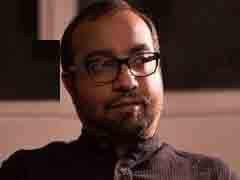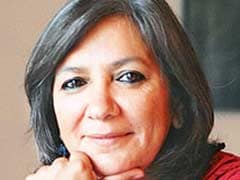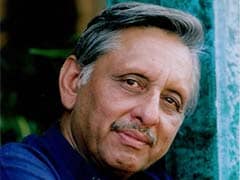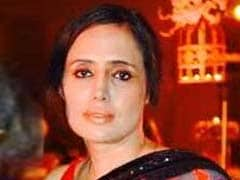- Home/
- Congress, Please Accept POTUS Visit Is a Success
Congress, Please Accept POTUS Visit Is a Success

Nalin S Kohli
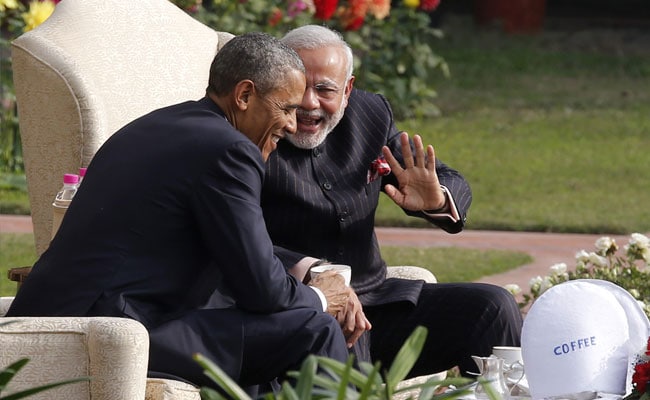
First impressions are said to be lasting impressions. If the warmth of the bear hug between President Barack Obama and Prime Minister Modi on arrival in Delhi was indicative of a promising visit ahead, expectations are being met.
The visit was considered historic even before it had begun. The President of the United States had, after all, accepted an invitation to be chief guest at India's Republic Day Parade, going where no serving President had gone before. Even the rain during the parade was not a dampener on the enthusiasm of all those who braved the weather to be a part of this historic occasion.
A day earlier, both leaders had a one-on-one discussion during a walk followed by 'Chai Pe Charcha' in the gardens of the resplendent Hyderabad House. Not only was the ice broken, but there was also ample evidence of a warming personal relationship between the two leaders. Beyond formal engagements, both appeared relaxed and engaged in friendly conversation. This bodes well for the strengthening of the Indo-US relationship.
However, beyond atmospherics, the sum and substance of the visit would expectedly be judged on specifics achieved, as well as on the roadmap ahead. From every perspective, the visit is substantive and successful. The setting aside of seemingly irreconcilable differences on the Civil Nuclear deal, beyond doubt is a significant breakthrough in Indo-US ties. The fact that even six years after the deal was signed, no actual progress had been achieved, was an indication about the existence of deep differences. Those have been overcome.
It is believed that both leaders personally enabled the breakthrough during their interaction at Hyderabad House. President Obama waived intrusive checks above and beyond those exercised by the International Atomic Energy Agency, something India considered sensitive in terms of sovereignty. Prime Minister Modi ensured that India's liability law was not compromised. With this, the field is now set for operationalising the civil nuclear agreement.
The establishing of a direct hotline between President Obama and Prime Minister Modi is another major development. It is testimony to the transformation of the relationship and also confirms the import each attaches towards enhancing this relationship further.
The business community, also expecting greater economic engagement between India and US, is experiencing a major impetus. Both leaders have set aside time and opportunity for interacting with business leaders from both countries. The platform is set. It is now up to individual organizations on either side to make use of mutually beneficial opportunities that exist. The indications are certainly favourable and hold promise for stupendous growth. Some experts estimate that bilateral trade between India and the United States could grow manifold and touch as much as US $ 500 billion by 2020.
Despite all this and the thumbs up by experts and analysts alike, a few perpetual naysayers insist on claiming how little has been achieved! Not surprisingly, this includes Congress party spokespersons or sympathizers. They rightfully claim credit for the signing of the civil nuclear agreement by Dr Manmohan Singh. However, the fact that nothing moved on the ground for six years thereafter cannot be obliterated. In raising the pitch on who signed the agreement, they inadvertently point to and only accentuate the fact that it took different administrations in both countries to bridge the gaps that would ensure its actual implementation.
Some in the opposition have also gone out of their way in deprecating the Obama administration as a "lame-duck" presidency. The President of the United States is hardly "lame-duck". In fact, this powerful institution is anything but that. Perhaps the only "lame-duck" stance seen in recent times was under the erstwhile Congress UPA dispensation, in their inability to implement and actualize several initiatives.
Through this visit, both President Obama and Prime Minister Modi have eliminated inertia that had crept into the relationship between the US and India. Both have committed themselves towards a path of structured and strengthened engagement. The refreshing informality and personal chemistry between the two leaders has set the stage, graciously, for a more synchronized strategy.
Disclaimer: The opinions expressed within this article are the personal opinions of the author. NDTV is not responsible for the accuracy, completeness, suitability, or validity of any information on this article. All information is provided on an as-is basis. The information, facts or opinions appearing in the article do not reflect the views of NDTV and NDTV does not assume any responsibility or liability for the same.
................................ Advertisement ................................
Opinion
MoreOpinion: China Has Helped India's Cause With TrumpMihir Sharma, Bloomberg
Thursday June 29, 2017Very little was expected in India from Prime Minister Narendra Modi's visit to the U.S., and for good reason: Modi had gone out of his way to cultivate a personal relationship with Barack Obama, including famously pouring out a cup of tea for him and the cameras when Obama visited India.
Opinion: Modi's US Speech Was Letter Perfect, Ticked Off Every BoxAshok Malik
Friday June 10, 2016Without taking recourse to the old wailing sheet and cribbing to everyone about Islamabad, Modi has devised a mechanism to shape the debate to India's advantage.
Opinion: Modi Ignored Advice To Make Obama Squirm. It Has Paid Off.Jyoti Malhotra
Saturday June 04, 2016The visit to the US in the coming week, in fact, brings Obama's relationship with both Modi and India full circle.
Blogs: कादम्बिनी के कीबोर्ड से : क्या परमाणु करार पर पीछे हटे हम?
Sunday February 08, 2015असल में परमाणु रिएक्टरों में हादसे की सूरत में जो हर्जाना होगा, वह रिएक्टर चलाने वाले को यानि ऑपरेटर को देना होगा। कानून में यह प्रावधान है कि अगर ऑपरेटर चाहे तो वह सामान और ईंधन आपूर्ति करने वाले पर हर्जाने के लिए दावा कर सकता है। लेकिन यहां पर समझने वाली बात यह है कि ऑपरेटर कौन होगा।
Opinion: Mani-Talk: Modi is Turning Us into America's New PakistanMani Shankar Aiyar
Thursday February 12, 2015In "Cold War II", battlefield could be India, writes Mani Shankar Aiyar.
Opinion: Obama Had Pointed Message for Modi 2.0Shashi Tharoor
Wednesday January 28, 2015Clear warning that PM will fail if he reverts to Modi 1.0, writes Shashi Tharoor.
Opinion: What Pakistan Makes of Obama-Modi ChemistryMehr Tarar
Tuesday January 27, 2015Acceptance of Modi's goal-oriented leadership, writes Mehr Tarar.



